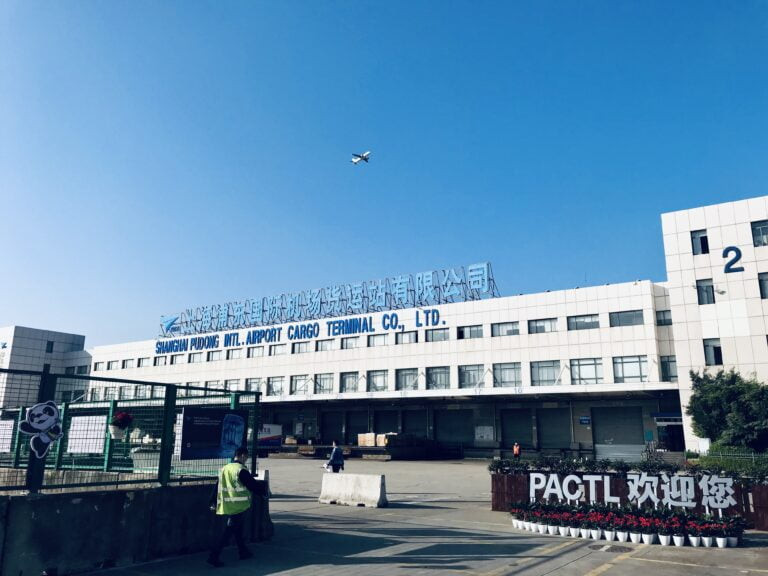Every logistics chain consists of a flow of goods and a flow of information. Without information, there is no movement of the goods. Consequently, information has always been essential for transportation. Innovation and digitalisation allows cargo handlers to exchange information more quickly, proactively and upfront.
This means the subsequent parties in a supply chain can – based on the information received – initiate the related processes before the good actually arrive. Today’s operation and airfreight supply chains would no longer function without this proactive flow of information, whether in terms of airfreight operations or regulatory compliance.
“The pandemic has probably been an accelerator for each individual actor in the market to embrace digital progress more quickly and has triggered acceptance for change,” Carsten Hernig Deputy General Manager VP Sales & Marketing and Production, stated.
“It has also altered certain patterns of economic behaviour, such as online shopping, which have a significant impact on business patterns that we are seeing in post-pandemic times. The strong development of cross-border e-commerce is one example.
“However, I do not believe that the pandemic itself has brought about a lot of innovation. In my view, it has rather triggered and accelerated the active usage and acceptance of available technologies.”
PACTL’s position
As for every business, digitalisation plays a key role in PACTL’s operations. Without constantly transforming and improving its data management, the cargo handler would not be able to handle the volumes it currently manages, up to two million tons per year.
Business patterns are changing, expectations regarding digital capabilities in the market are rising, and cost efficiency is an everlasting topic. Enhancing the digital landscape to benefit customer experience and operational efficiency is, therefore, a fundamental part of PACTL’s service promise.
One concrete example to give is PACTL’s Easy Cargo solution, which provides a digital interface for its customers and stakeholders in the supply chain. This digital solution enables fast and complete information availability, significantly reducing the need for paper and administrative efforts, such as filing and queuing, have enhanced several operational processes. The system automatically sends arrival notifications and manages inventory information without manual intervention, providing precise, proactive communication to customers and reducing the need for “second queries.”
“This greatly improves efficiency and customer satisfaction and reflects our vision of achieving paperless cargo acceptance and delivery with minimum administration effort for the customer,” Hernig explained.
“Beyond commercial use cases, it is important to point out that the digital transformation also plays a crucial role in improving safety and security.
“With digital support you can identify incorrect pallet build-up or hidden dangerous goods much easier. This capability ensures that we maintain high safety standards while streamlining operations.”
Use cases
Streamlined tally reporting of HAWB: For primary forwarders with long-term agreements, PACTL’s system automatically sends tally reports of HAWB data to customs upon completion of handling. This automation eliminates the need for forwarders to send manual requests, reducing the administrative burden and enhancing the speed and accuracy of data transmission.
Telegrams and CCA Circulation: The system pushes information from telegrams and CCA directly to the relevant forwarders, allowing them to access and download content online. This digital approach replaces the need for physical visits to counters and enables faster, more eco-friendly operations.
Customs Manifest Data Changes: Forwarders can perform new manifest additions through the system, with PACTL reviewing and sending data to the customs system for seamless integration. This reduces the need for forwarders to travel between various locations and enables faster processing times.
Appointment Scheduling for Pickups: Forwarders can schedule pickups for released goods through Easy Cargo, choosing convenient times and streamlining the verification process for non-dangerous goods. This automated system reduces the need for physical counter visits and allows for more efficient management of pickup appointments, creating an electronic bridge for the forwarders.
“These innovations collectively enhance PACTL’s operations by reducing manual tasks, increasing transparency, and improving the speed and accuracy of information sharing. They not only ensure a smoother supply chain but also elevate the overall customer experience,” Hernig highlighted.
“Our commitment to leveraging technology helps us meet the evolving demands of the industry and maintain a competitive edge.”
What’s next?
Technological innovation delivers complete visibility by facilitating seamless information sharing and communication across the entire supply chain. No matter what systems and innovations you are using, if they do not create the desired added value for the customer, they will have little impact. Technology helps to gather, compile and deliver the relevant information to the customer in the right format, quantity, and at the right time.
Looking forward, PACTL sees two areas as key targets for future developments – Artificial intelligence and the regulatory environment:
“By using artificial intelligence, certain tasks—whether operational checking or administrative work – can be further automated and potentially completed with lower error rates and at higher speeds,” Hernig explained.
“Safety and security have the potential to be further improved, as we will be better positioned to see the hidden facts. However, even the most reliable AI systems will not change the fact that the collaborative responsibility for every process and its results still remains with people, who are behind the process.
“We all know that the regulatory environment of our industry is quite demanding for good reasons. However, because it is demanding, it is also time consuming. With the help of digital tools and information exchange, these lead times can be reduced,” he continued.
“By actively generating and sharing information proactively, along with better quality of the factual and possibly also visual information, clearance processes can be significantly accelerated. I would say that we are technologically not far from the point, where based on possibly available information, you could complete the full import customs and regulatory compliance clearance at any point of the planet long before the shipment touches down.
“However, this requires – not only technological infrastructure – the human effort to collaborate and build trust. So, again, we see that every technological breakthrough always requires human collaboration.”




